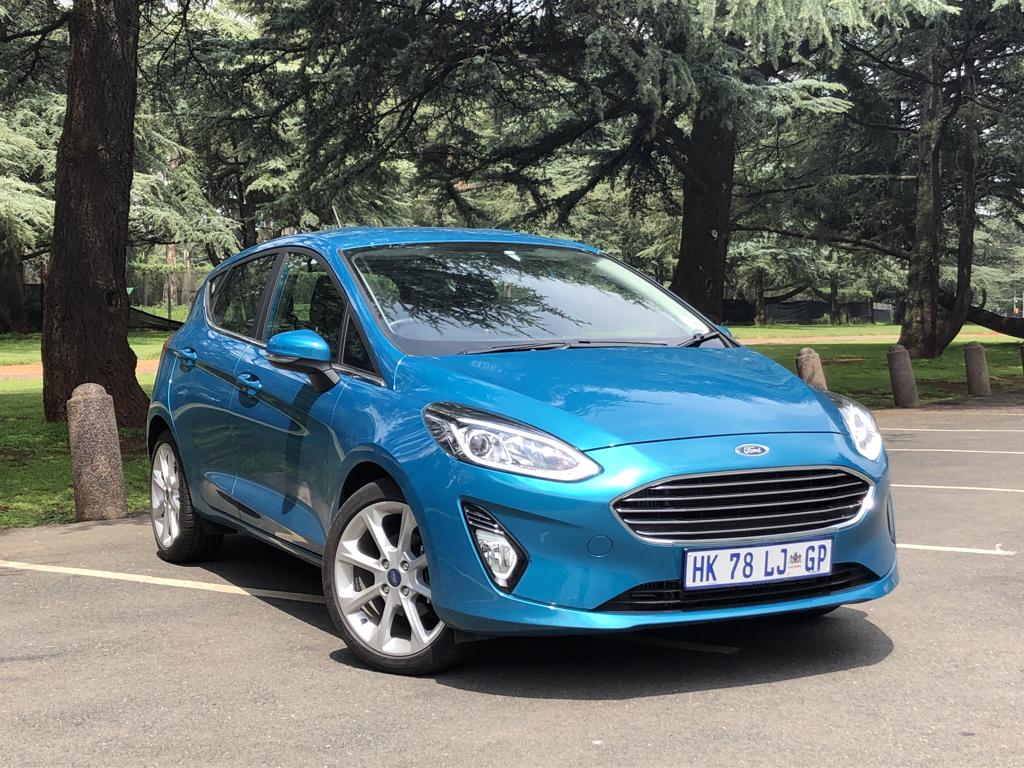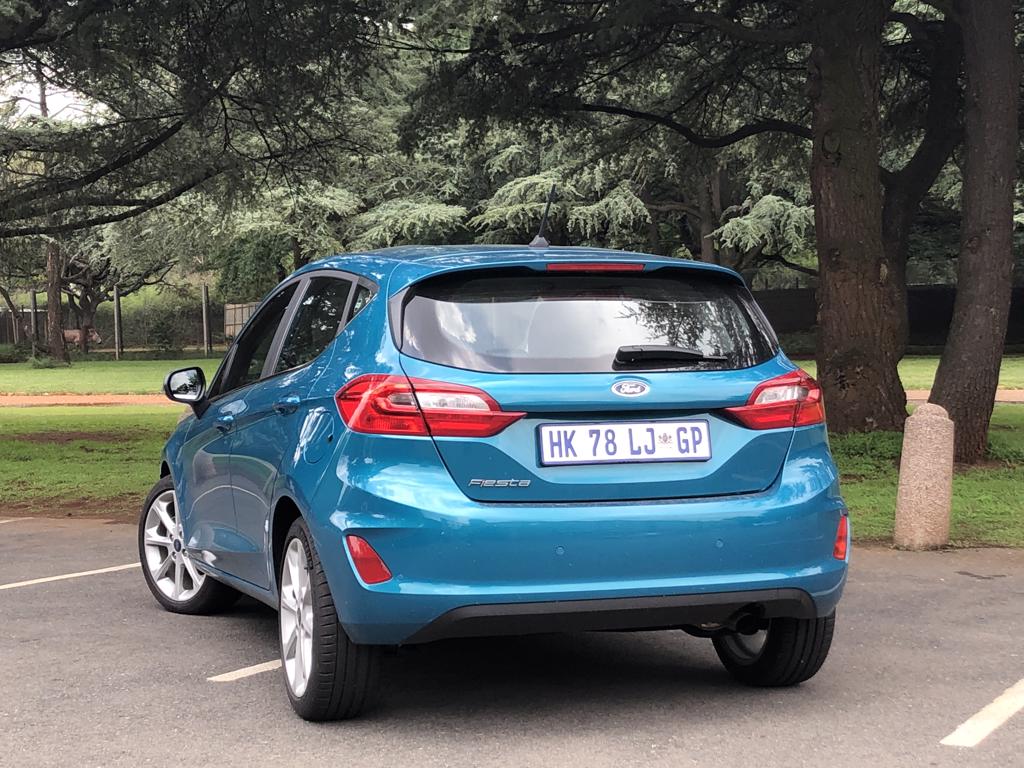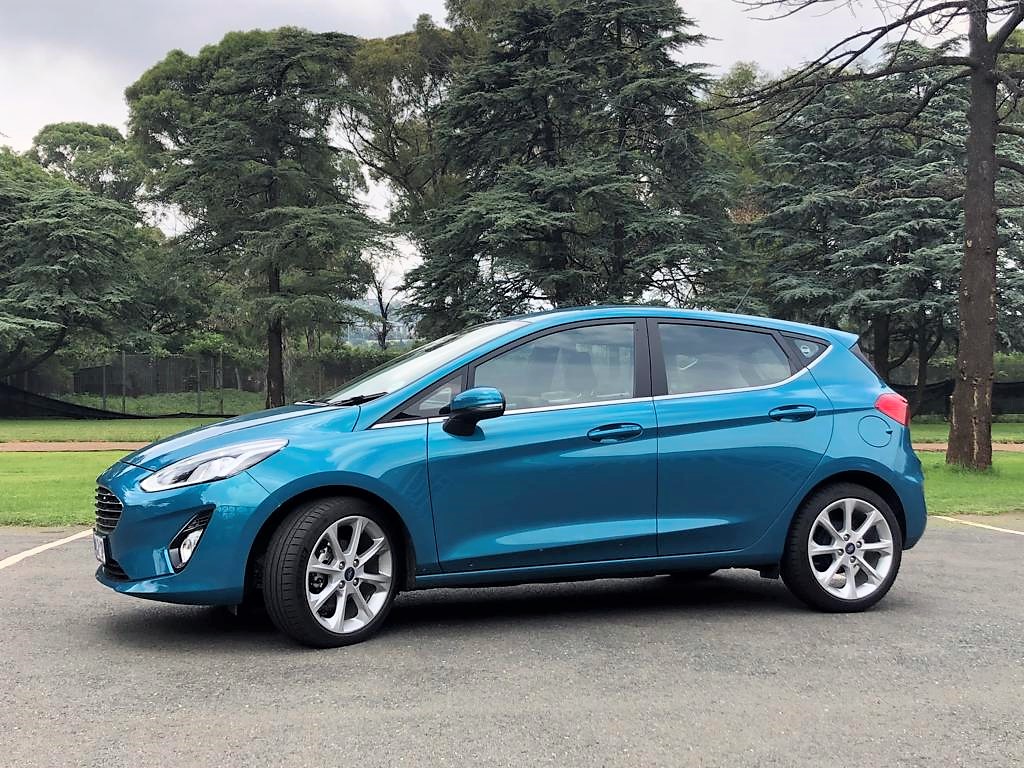Reason to Fiesta

When I had my first taste of the all-new Ford Fiesta last year I came away a little disappointed. That was the 1,5-litre diesel model in Trend spec and it fell short on expectations in more ways than one.
I could tell that the base of the car was really good, though, and was sure that the 1.0 EcoBoost Titanium would be a far more rounded package and more enjoyable to drive; especially so since the manual version costs only R4 000 more.
And so, when this top of the range model arrived equipped with an automatic gearbox, I was keen to see if my hunch was right. The six-speed auto adds R15 000 more to the price of the manual version (costing R319 900), but the base car remains the same.

In fact, there are few outward signs to distinguish this car from Trend-spec models. The most obvious clues are the chromed grille, LED daytime running lights and larger 17-inch alloy wheels.
The interior is also very similar, boasting the same high-quality materials, good build quality, piano-black accents, and bizarrely narrow door pockets. Seriously, this is something I have trouble getting my head around… These are borderline uselessly small – but at least the centre console storage and glovebox are decently sized.
I digress. Buyers splashing out that little bit extra for the Titanium model will be pleased to find out that the Sync 3 infotainment screen jumps in size from 6,5 to eight inches and the system also boasts navigation and a seventh speaker. Naturally, Sync 3 also includes Apple CarPlay and Android Auto.

There’s also electronic climate control, an auto-dimming rear-view mirror, cruise control, keyless entry and start, and a leather-covered steering wheel. While the Trend model doesn’t necessarily want for spec, these additional features go a long way to making the little Fiesta feel like a much more grown-up package.
However, it is the Titanium’s standard “sport” seats that are its biggest gain over the Trend model. Not because they are heated, but because they actually are comfortable and offer far more support than the standard seats fitted to the Trend.
Common to all petrol-powered models in the new Fiesta range is the 1.0 EcoBoost motor. While it produces a fair 74 kW of power, it is the 170 Nm of torque that impress – especially because this is produced in a wide band beginning at a low 1 500 r/min and running to 4 000 r/min. Why does that matter? Well, the strong torque at low revs makes the Fiesta a doddle to drive.

OK, you’re also likely to indulge in the thrummy little powerplant’s energetic nature – especially considering the chassis is so well sorted and fun to chuck around. If you do, though, you’re likely to take a hit at the pumps. Ford claims the little triple will return 5,2 l/100 km on the combined cycle… I’m mildly ashamed to admit I achieved just less than half that in a week of driving.
What about the auto gearbox – is it worth the extra outlay over the manual? Well, in outright performance terms there’s not that much in it; the specs reading that fuel consumption is equal and the manual is slightly quicker in acceleration. In the auto’s favour are smooth shifts and programming that quickly works the box up to the highest possible ratio. If it were me, I’d save the money and buy the manual instead – but those opting for the auto won’t be disappointed.
So, was my hunch correct? Is the Titanium the model to go for in the new Fiesta range? Undoubtedly it is. The visual upgrades make it even better looking, the additional features sweeten the deal and the drivetrain is a peach.

Overall, this must be one of the best options in the segment at the moment.
All Fiestas come with a four-year/60 000 km service plan, four-year/120 000 km warranty and three-years roadside assistance.
CyberStoep rating: 7/10
Published by
Charleen Clarke
focusmagsa



